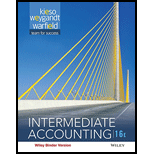
Income: Income is an opportunity for an individual, a firm, or an entity to increase the utilizing power and the saving ability within a specific period of time. Generally, income is calculated or expressed in the form of money or its worth.
To identify: To identify the difference between pretax financial income and taxable income.
Explanation of Solution
Pretax financial income: Income that is computed based on the records and documents presented by an individual, a firm, or an entity is termed as pretax financial income. Generally, pretax financial income is eligible for computing or determining the net tax liability of an individual, a firm, or an entity.
Taxable income: Income that is computed after all allowable or permissible deductions are made from pretax financial income is called taxable income. In other words, taxable income is eligible for computing the tax liability.
The difference between pretax financial income and taxable income is that pretax financial income is the gross income of an individual, a firm, or an entity, while taxable income is calculated after allowable or permissible deductions are made from pretax financial income. Pretax financial income and taxable income are not the same.
Want to see more full solutions like this?
Chapter 19 Solutions
Intermediate Accounting, Binder Ready Version
- Which financial statement reports a company’s assets, liabilities, and equity at a specific point in time?A. Income StatementB. Balance SheetC. Statement of Cash FlowsD. Trial Balancearrow_forwardCan you explain the correct methodology to solve this general accounting problem?arrow_forwardAccrued expenses are:A. Paid and recordedB. Incurred but not yet paidC. Not yet incurredD. Always non-casharrow_forward
- I am trying to find the accurate solution to this general accounting problem with the correct explanation.arrow_forwardNo AI Unearned Revenue is classified as a:A. RevenueB. AssetC. LiabilityD. Contra Revenuearrow_forwardPlease provide the answer to this general accounting question with proper steps.arrow_forward

 AccountingAccountingISBN:9781337272094Author:WARREN, Carl S., Reeve, James M., Duchac, Jonathan E.Publisher:Cengage Learning,
AccountingAccountingISBN:9781337272094Author:WARREN, Carl S., Reeve, James M., Duchac, Jonathan E.Publisher:Cengage Learning, Accounting Information SystemsAccountingISBN:9781337619202Author:Hall, James A.Publisher:Cengage Learning,
Accounting Information SystemsAccountingISBN:9781337619202Author:Hall, James A.Publisher:Cengage Learning, Horngren's Cost Accounting: A Managerial Emphasis...AccountingISBN:9780134475585Author:Srikant M. Datar, Madhav V. RajanPublisher:PEARSON
Horngren's Cost Accounting: A Managerial Emphasis...AccountingISBN:9780134475585Author:Srikant M. Datar, Madhav V. RajanPublisher:PEARSON Intermediate AccountingAccountingISBN:9781259722660Author:J. David Spiceland, Mark W. Nelson, Wayne M ThomasPublisher:McGraw-Hill Education
Intermediate AccountingAccountingISBN:9781259722660Author:J. David Spiceland, Mark W. Nelson, Wayne M ThomasPublisher:McGraw-Hill Education Financial and Managerial AccountingAccountingISBN:9781259726705Author:John J Wild, Ken W. Shaw, Barbara Chiappetta Fundamental Accounting PrinciplesPublisher:McGraw-Hill Education
Financial and Managerial AccountingAccountingISBN:9781259726705Author:John J Wild, Ken W. Shaw, Barbara Chiappetta Fundamental Accounting PrinciplesPublisher:McGraw-Hill Education





